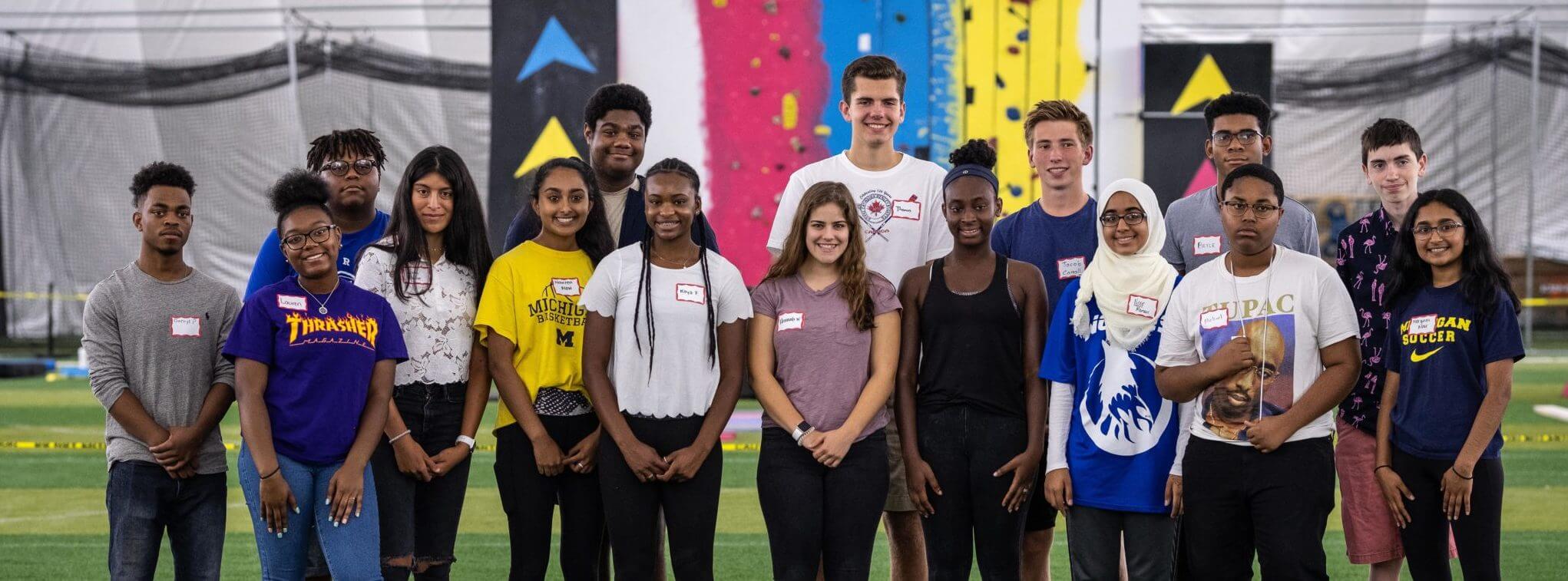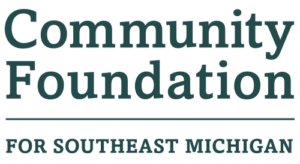
Kyle Caldwell, President and CEO of the Council of Michigan Foundations, engaged in a listening tour with stops throughout Michigan to speak with members about their work, experiences with CMF, and what they see for the future of philanthropy in Michigan. As a member organization of CMF, the Community Foundation for Southeast Michigan participated in the Detroit listening tour session. Along with CFSEM staff members, we also had participation from a representative from our Youth Advisory Committee (YAC).
The Community Foundation’s Youth Leadership project was established in 1991 with a $1 million challenge grant from the W.K. Kellogg Foundation. These funds established an endowed youth fund that would, in perpetuity, involve young people in reviewing grant proposals from organizations that benefit youth in southeast Michigan. Our YAC (which includes 20 middle and high school students from across the region) oversees this fund, and makes grant recommendations to the CFSEM Board of Trustees on grants ranging from $2,500 to $20,000, for programs and projects that are designed to benefit youth and promote youth leadership in our region.
Youth Advisory Committee member, John, a student at University of Detroit Jesuit High School, attended the tour and wanted to share a reflection:
Uniting to Make a Difference
I was invited to go to a listening tour for Kyle Cadwell, President and CEO of CMF. I expected the event to be more like a speech, where I was only one listener in a full auditorium to hear from Mr. Cadwell, but when I arrived I saw something very different. When I walked into the room where the event would take place I didn’t see a theater with a few hundred seats, but instead a small meeting room, with only six tables. I was the youngest by about twenty years, in a room with CEOs, CFOs, executives, and directors. To say I felt out of place would be an understatement.
As we took our seats and started the event, it differed even further from my expectations. This was not Mr.Cadwell touring the state as we would listen his speech, but he was touring the state to listen to our answers to three nebulous questions:
- What are the opportunities, trends, and challenges you see for Michigan philanthropy?
- What is the most important roles CMF can play to address these opportunities, trends, and challenges?
- What are new leadership roles you see for Michigan philanthropy and CMF?
We were seated at the tables to discuss our answers as small groups, then have one person from our table present to the group at large. Although many of the answers to these questions were about obscure pieces of tax legislation, or minute details on how a foundation runs that went over my head and never crossed my mind, I did hear many answers relating to a common thread.
Two of the people sitting at our table were from a utilities company that was just starting to branch out into philanthropy. One of the challenges that they brought up was the issue: how does a new foundation find organizations to fund grants for? How should philanthropy and private sector collaborate for a larger and more effective impact? Their problems were on how to better communicate, with their parent company or with the nonprofits that are being donated to.
Another lady sitting at our table was from a private foundation. She was experienced in the field and she brought up how oftentimes many organizations have small solutions to symptoms, because although we know how to solve the root issues, no one organization is strong enough by itself. This piece meal and fractured approach led to much less efficient and effective approach than what could be done if there was a singular foundation with all the same resources coordinating solutions to issues. She discussed how the CMF could take a leadership role by facilitating interaction between foundations and projects to have a holistic approach. Her solutions promoted better communication between foundations.
One person from another table remarked on the difficulty of getting information from the higher echelons of philanthropy to the common everyday citizen, where most donations come from. While charitable organizations or policy makers talk about food scarcity, or food deserts, there is a large disconnect when most people simply talk about hunger. Someone else from a different table elaborated on this problem of communication, saying that one way to improve communities and foundations is to have more diversity in those who in work in foundations and other charitable organizations. Foundations should recruit more minorities, the oppressed, the youth, because a varied approach can more easily relate to a varied audience.
I realized that communications is fundamental to the function of all of these organizations, and the best way to improve the way things work is to have more meaningful communication. Strengthening the bonds between private corporations, small non for profits, philanthropic organizations, and everyday citizens will lead to a strong unified front to work on fundamentally improving our society. Wrongs will be righted when we are united, and it is our responsibility to strive together for a better future.
Photo: YAC Members 2019
